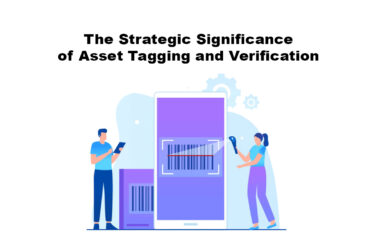As we boldly stride into the Digital Age, India advances towards a cashless future!
In a sweeping transformation, India’s digital payment ecosystem has surged forward, propelled by a synergy of government mandates, financial institution’s innovations, and technological expertise. The country’s demonetization drive in 2016, aimed at curbing black money and promoting a cashless economy. This pivotal moment not only accelerated the adoption of digital payments but also revolutionized the way transactions were conducted.
One of India’s most popular digital payment methods is the Unified Payments Interface (UPI), a real-time payment system developed by the National Payments Corporation of India (NPCI). Launched in 2016, UPI enables instant money transfers between bank accounts via mobile phones, without needing account details. As of March 2022, UPI had processed over 4.4 billion transactions worth over 10 trillion rupees (approximately USD 132 billion). At the end of the calendar year 2023, UPI’s total transaction volume stands at 83.75 billion.
The government’s push towards digital financial inclusion through initiatives like the Jan Dhan Yojana and Aadhaar-based payment systems has also helped to increase the adoption of digital payments in rural areas.
Overall, its growth in India has been remarkable, transforming how people transact and pay for goods and services. It has also created numerous opportunities for businesses, particularly small and medium-sized enterprises, to grow and thrive in a digital-first economy.
Future Opportunities of Digital Payments
India presents a massive opportunity for digital payments due to its large population, increasing smartphone penetration, and the Government’s push towards a cashless economy. Let us delve into some of the future opportunities within:
- Unlocking Rural Potential
While digital payments have gained significant traction in urban areas, there is still a vast untapped market in rural areas. The government’s focus on financial inclusion and expanding digital infrastructure in rural areas presents a massive opportunity for digital payment providers to tap into this market.
- Empowering E-commerce Growth
With the increasing popularity of e-commerce in India, there is an opportunity for digital payment providers to integrate with online marketplaces and provide a seamless payment experience for consumers. This will increase its adoption and drive e-commerce growth in the country.
- Innovation in Secure Payment Technologies
India has seen significant innovation in new payment technologies, including QR codes, contactless payments, and biometric authentication. As these technologies continue to mature, there is an opportunity for new payment providers to offer more secure and convenient payment options to consumers.
- Global Expansion
With the growing demand for cross-border payments, there is an opportunity for Indian online payment providers to expand their services globally. This will not only help in increasing revenue but also position India as a leader in this field.
Advantages of Digital Payments
- Digital payments offer the convenience of making transactions anytime, anywhere, without requiring physical cash.
- Digital Payments reduce the cost associated with cash handling, storage, and transportation, benefiting businesses and the economy.
- Digital payments help in including more people in the formal financial system, particularly in rural areas with limited access to traditional banking services.
- Customers will enjoy a positive shopping experience when they find it convenient to purchase from you, saving both time and money in the process.
- Digital transactions leave a digital trail, promoting transparency and accountability, which can help in reducing corruption.
- Many digital payment methods come with built-in security features such as encryption and two-factor authentication, making them more secure than cash transactions.
Disadvantages of Digital Payments
- Dependence on technology for transactions may present obstacles, especially in regions with limited internet access or frequent power interruptions.
- Digital payments are susceptible to cybersecurity threats such as hacking, phishing, and identity theft, posing a threat to the security of users’ financial information.
- Not everyone in India has access to smartphones or the internet, resulting in a digital gap that excludes certain segments of the population from engaging in digital transactions.
- Despite the convenience of digital payments, many consumers still prefer cash transactions, citing concerns over security and potential technical issues. Establishing trust among consumers is imperative for its success.
- Digital payments involve sharing personal and financial information, raising concerns about privacy and data security.
- Despite security measures, digital payment systems are not immune to fraud, including unauthorized transactions and payment scams.
Key Considerations for Secure Online Payments
Considering the increase in fraudulent activities, it’s essential to remain vigilant despite the apparent simplicity and security of online payments. Listed below are the primary factors to bear in mind:
- Avoid Saving Card Information:
To streamline transactions, many of us store our card information on smartphones or other devices to avoid repetitive data entry. However, this practice is discouraged due to the risk of misuse in case of theft. It’s advisable to promptly delete card information after each use for added security.
- Ensure your Passwords Remain Confidential:
As cliche as it may seem, it is necessary to follow this guidance. Keep your passwords private and change them often so that you don’t become a target of hackers or other online criminals. For best security, use a strong password and turn on the OTP option.
- Avoid the Use of Public Wi-Fi:
Regardless of urgency, refrain from conducting transactions over public Wi-Fi or computers to mitigate the substantial risk of data theft and other cyberattacks.
- Use Private Browsing Windows:
Be careful to perform all of your transactions in private windows and stay away from any suspicious websites or applications that are not included in the app store’s top recommendations.
In conclusion, digital payments have significantly reshaped our daily interactions with financial services, becoming increasingly indispensable. With the expected growth in the number of internet users and e-commerce market size, the future of digital payments in India looks bright. Online payments have their own set of drawbacks that you need to be aware of, despite the fact that they are often thought to be advantageous for many obvious reasons. In the modern digital environment, every useful function carries a degree of risk. However, with proper precautions and management, most of these concerns are manageable, ensuring safer and more secure digital transactions for all.





